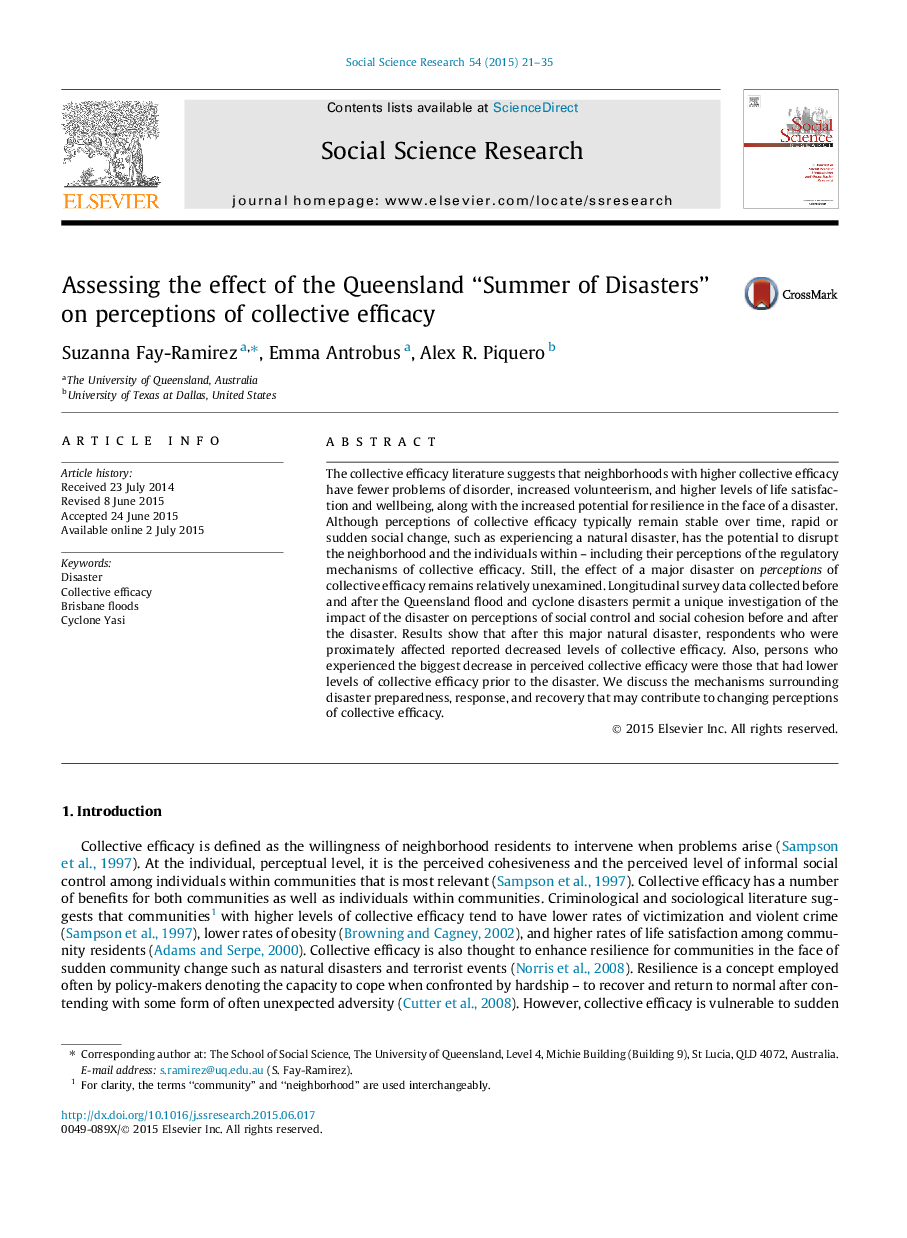| Article ID | Journal | Published Year | Pages | File Type |
|---|---|---|---|---|
| 955610 | Social Science Research | 2015 | 15 Pages |
•Perceptions of collective efficacy decrease after a natural disaster.•Perception changes driven by perceived neighboring and disorder.•Changes in perceptions most prominent for those who are economically vulnerable.
The collective efficacy literature suggests that neighborhoods with higher collective efficacy have fewer problems of disorder, increased volunteerism, and higher levels of life satisfaction and wellbeing, along with the increased potential for resilience in the face of a disaster. Although perceptions of collective efficacy typically remain stable over time, rapid or sudden social change, such as experiencing a natural disaster, has the potential to disrupt the neighborhood and the individuals within – including their perceptions of the regulatory mechanisms of collective efficacy. Still, the effect of a major disaster on perceptions of collective efficacy remains relatively unexamined. Longitudinal survey data collected before and after the Queensland flood and cyclone disasters permit a unique investigation of the impact of the disaster on perceptions of social control and social cohesion before and after the disaster. Results show that after this major natural disaster, respondents who were proximately affected reported decreased levels of collective efficacy. Also, persons who experienced the biggest decrease in perceived collective efficacy were those that had lower levels of collective efficacy prior to the disaster. We discuss the mechanisms surrounding disaster preparedness, response, and recovery that may contribute to changing perceptions of collective efficacy.
